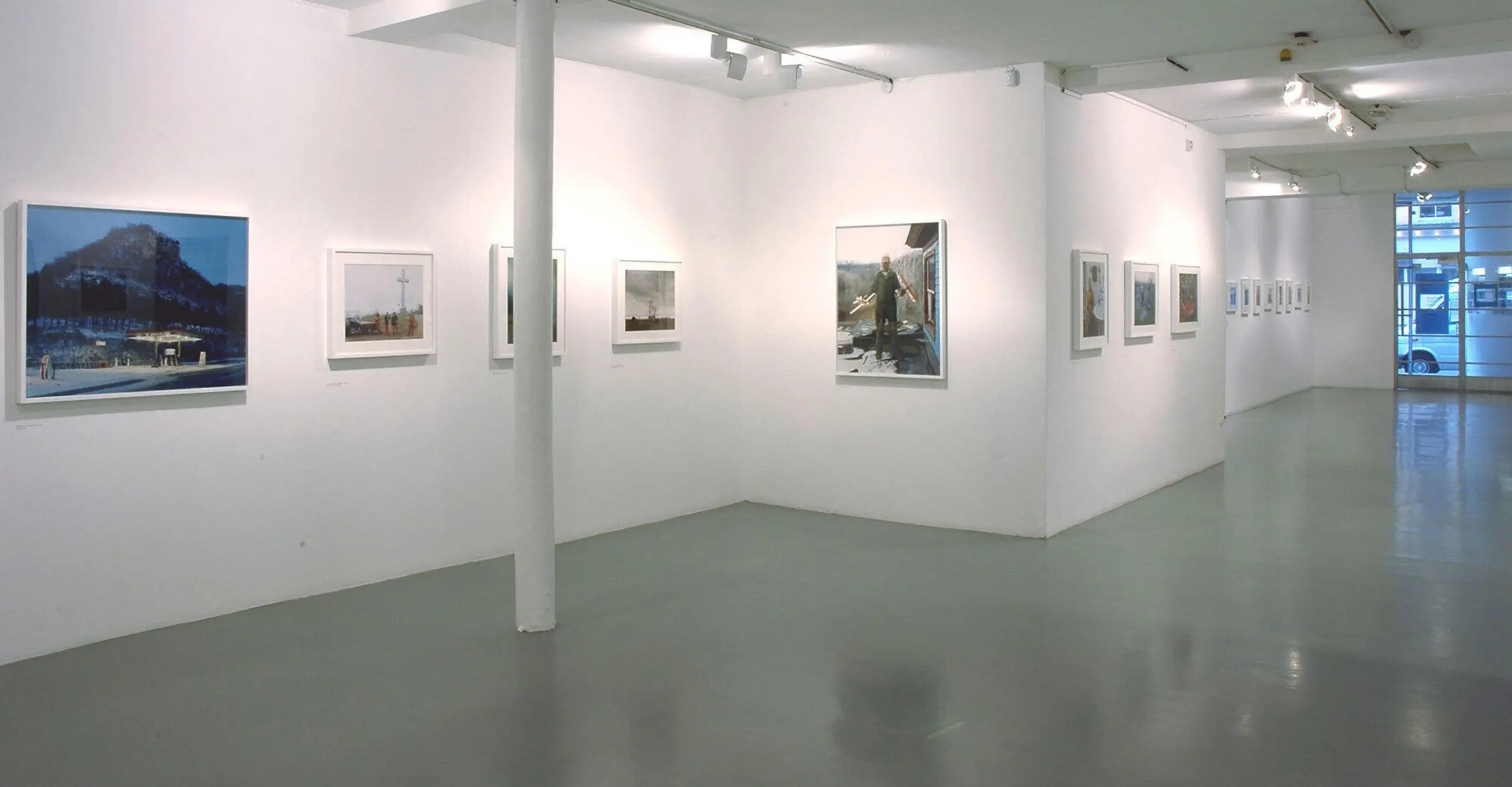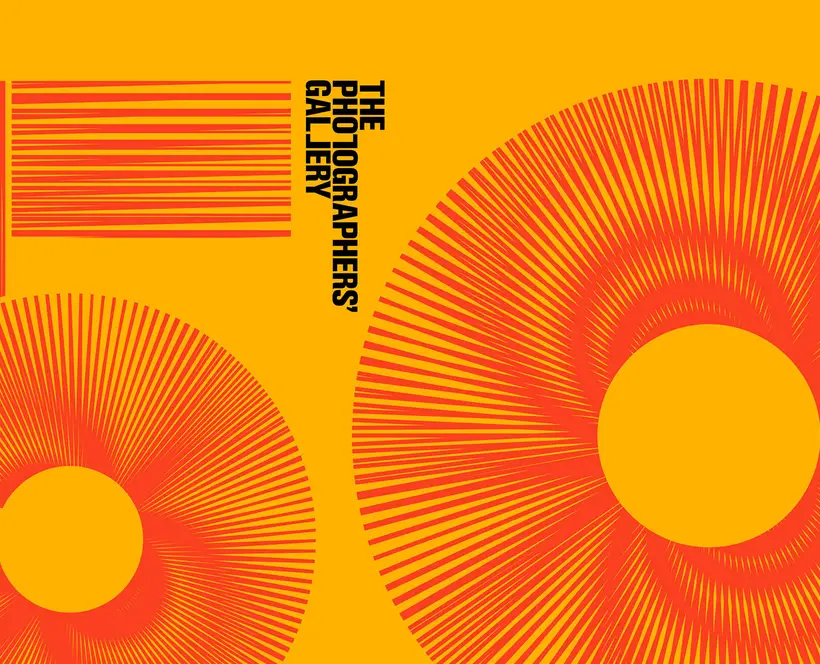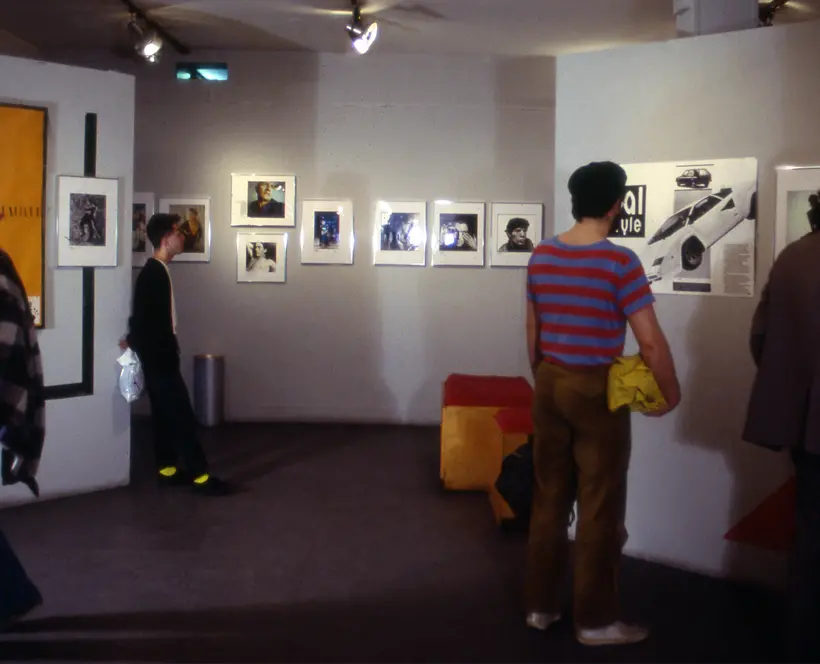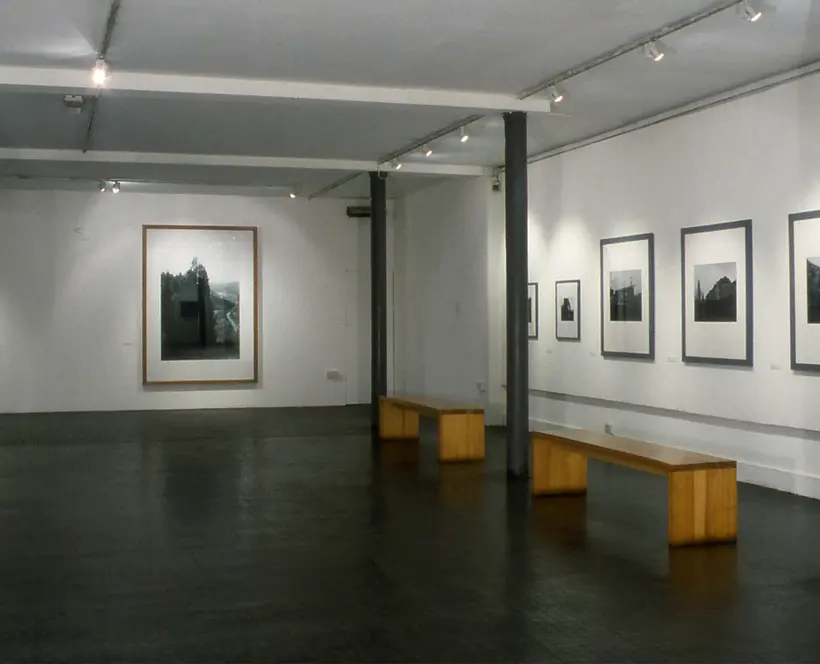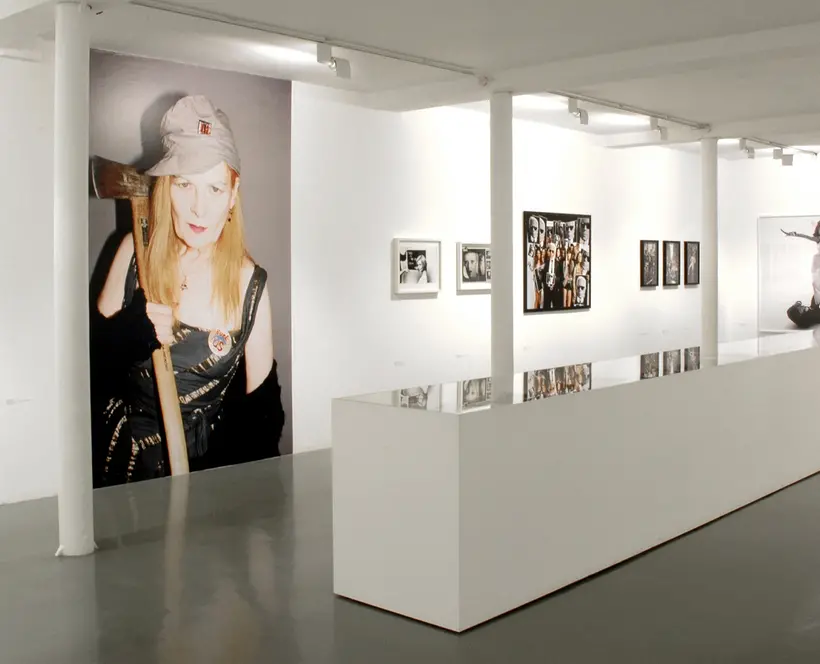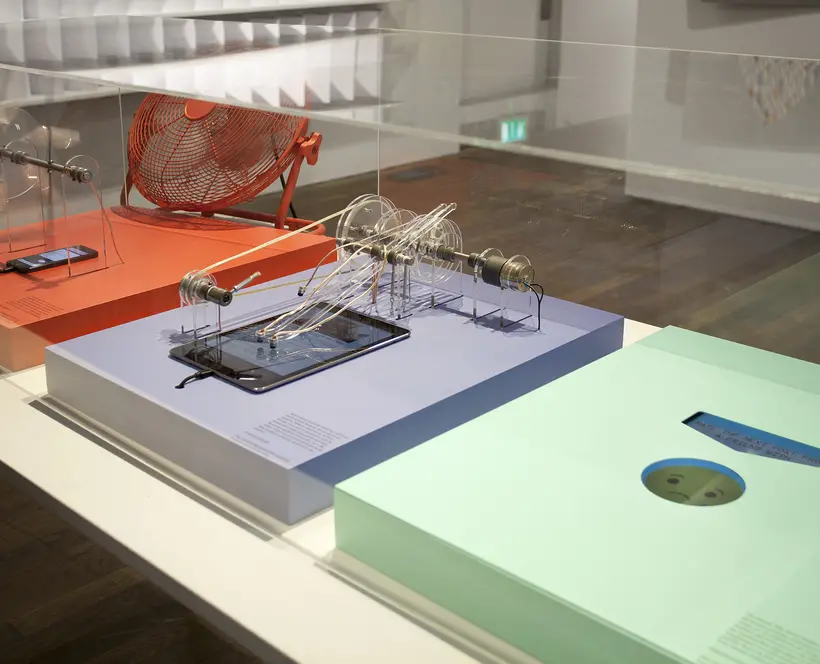The title page of the 2004 catalogue lent to me by the Photographers’ Gallery carries inscriptions from each of the four shortlisted photographers nominated for the Photography Prize in that year. Their reverent dedications are written as much to each other as to the institution that physically houses and organises the Prize. “Not competitors. Rather, trying to be citizens of one world,” writes Robert Adams. His words poetically encapsulate the ethos and vision set out for the Photography Prize from its earliest conception.
The world of photography is a big one, even if we often behave as if it is still quite small. The Photography Prize has from the start acknowledged the transnational conditions of the medium alongside the forces that structure the circulation and exchange of its product. At once a global currency, the image is the ultimate and final form of capital. Though its bounded nature is something of an ontological necessity, a photographic image transcends all but the most impermeable borders and boundaries. “Photography”, writes Paul Wombell in his introductory essay to the catalogue of the first Photography Prize in 1997, “has no manners; it does not announce itself in a grand formal gesture, it just seeps into our lives without us being aware.” Increasingly, we are cognisant of the fact that we live in a world produced and reproduced through photographic images. Adams’s statement speaks, if however cryptically, to the rights and responsibilities incumbent on a citizenry of makers and lookers who inhabit such a world. The same duty of care and consciousness falls to the institutions that consecrate the status of the medium and bestow recognition on its practitioners. To its credit and the culture’s benefit, The Photographers’ Gallery has, through the cultivation of the Photography Prize and the scope of its wider programme, critically and reflectively embraced those duties with passion and rigour over the course of the last decade.
As prizes go, the Photography Prize is still young. Its nearest competitor, the Hasselblad award, conducted largely in secrecy and constructed to honour lifetime achievement rather than a distinct body of work, is in the middle of its third decade. The great strength of the Photography Prize – some would perhaps see it as a weakness – has been the unpredictability and, at times, uneasiness of its shortlists. Prizes are judged as much by who is nominated as who wins. Among the distinguishing features of this prize in its first decade is a broad generational mix of international practitioners who represent a diverse range of approaches to making and showing photography in a fine art context. We recognize the work and names of Andreas Gursky, Boris Mikhailov, Thomas Demand, Anna Gaskell and Rineke Dijkstra from their status and position in our present moment. When Gursky won the Prize in 1998, one could buy his pictures for around £10,000. Boris Mikhailov, already in his sixties, was relatively unknown in 2001 and making some of the best work of his life. My point is not that the Prize was instrumental in launching the work, names or even careers of those artists. Indeed, a paradoxical effect of many art prizes is that it is often a greater boon to make it onto the shortlist than to win. Looking retrospectively over the shortlists and winners, one forgets the impact of the surprise and discoveries originally delivered. Photography, akin in many respects here to the novel, allows for work and its maker to seemingly come out of nowhere. A condition shared by most cultural products and media, though perhaps more visibly extreme in photography, is that of the one-off, or singular body of work which finds its place and resonance in a moment not to be repeated. Richard Billingham’s remarkable series of works that went into Ray’s A Laugh – which won the 1997 Prize in its first year – is a case in point. At the same time, earlier work may find a second life during a period of reassessment and thus bring an artist and their practice into a new light of recognition. The work and practices of Stephen Shore, nominated in 2005, and Joel Sternfeld, who won the Prize in 2004, come to mind. From its onset, The Photography Prize has been structured to sensitively respond to those conditions of photography.
In the first eight years of the prize, nominations were open for any living photographer who exhibited or published a significant body of work in the United Kingdom during the previous 12 months of a given year. Since 2005, eligibility has been extended to European-wide exhibitions or publications; in line with this, the open process of nominations has given way to an Academy of 75 leaders in the photographic and art industries who proffer nominations to the jury. Whether nominations were open or marshalled by a set academy, their number has regularly amounted to between one and two hundred nominees whose work must be sifted through and appraised in the course of a day with a shortlist agreed at the close. Another structural change is the reduction of the shortlist from five (1996-2002) to four (2003 to present) photographers. The Photography Prize is perhaps most remarkable for the consistency of its ethos and vision, given the structure and quality of the work selected for the shortlist. This has much to do with the shape of its origins, along with its firm institutional grounding in The Photographers’ Gallery under the stewardship of its Director and attentive administration and organisation by its extended staff.
I will turn to the story of those origins shortly. First, I want to touch on a subject that will inevitably remain somewhat beyond the scope of this essay – a subject that is, nonetheless, embedded in the very fabric of the Photography Prize. The Prize – through its assembled short-lists of work and projects, winners, catalogues and wider documentation – stands as a summary index of a rising trajectory of the mediums´status across the last decade. The Prize is a prism through which one might read what is possible, or recognized in the way of practices and what is not. Taken as such, a reading of the Prize across time should provide a standard against which one could measure change and permutations in the demarcations of contemporary culture and the field of photographic practices.
The absolute origins of the Photography Prize are modest and lodged in a small in-house photography competition held in the London offices of Citibank Private Bank. Around the year 1992, the Citibank Private Bank Art Advisory Service was charged with the task of purchasing a collection of contemporary photography to hang in their corporate buildings. With the help of a colleague, Ian Dunlop, the London Head of the Art Advisory Service, spent six months touring studios and galleries in London, Paris and New York. He purchased some 60 pieces that were displayed in client meeting rooms and offices. The collection initially produced a puzzled and somewhat sceptical reaction from colleagues and employees at the bank. Dunlop decided to invite staff to meet thephotographers, discuss the work and show their own images to the professionals. The idea of an ambitious competition that focused exclusively on contemporary photography was born. Ian Dunlop felt that the Turner Prize had missed out on photography in a big way. Dunlop and two other colleagues – Andrew Pinhorn and David Richards – met with Paul Wombell, then Director of The Photographers’ Gallery, to brainstorm what could be done. Wombell sketched out the structure of the Prize and how it should be run: the bank will award £10,000 to one photographer who has exhibited, in print or electronic form, a major body of work within the time frame of 1 October 1995 to 30 September 1996. There were no restrictions concerning age, nationality, country of residence, or indeed content or format.
I myself moved to London from New York City in January 1996. Already before I arrived, I was aware of the lack of parity between what was and had been happening in terms of photographic theory and practice in the UK and the dearth of local institutional support for and recognition of those achievements. The forces of an expanding market have done much to level the field in the past decade even if the culture still lags somewhat behind. The Photographers’ Gallery and the Photography Prize, in my experience and reading, have steadfastly supported a wider and deeper appreciation and interest in photography and its practices. Other institutional programmes and practices, from the vantage of recent years, now willingly follow suit. In 1996 it was certainly fair comment to say that in Britain, photography was a problem and that problem was one of status. The paradox Wombell identified in his essay to that first Photography Prize and catalogue was that: “…photography’s uncertain status has produced an environment in which the medium has flourished.” The previous decade – roughly 1985 -1995 – has been identified as one of the most successful and creative periods in the history of photography and this was largely taking place in Britain. Above and beyond the then new British art, what fuelled the passion, excitement and ambitions for the Prize was the role photography and the image plays in contemporary culture across many different practices: that of fashion, documentary, advertising and fine art. This has much to do with those practices which cross over previous aesthetic and distributional divides, but even more to do with the erasure of boundaries between the autonomous fields of culture and economy. Unravelling the interests and objectives of corporate sponsorship is a complex task. Corporations do not act as one. They each have their own particular ethos and understanding of corporate, cultural and social responsibilities. In the UK, a British corporation has rarely, if ever, supported photography. In the case of the initial title sponsors of the Photography Prize, support stemmed from an idea and passion shared between a handful of people. “If you tried to make sense of why Citibank Private Bank actually supported this,” says Wombell, “it would make no sense as far as corporate branding identity. It was down to three people there. To them it made sense; they had some clients interested in contemporary photography, they thought we could do something interesting and it was not written down in the manual and they did it. I think they didn’t realise how it would end up.”[1]
The situation with the present sponsors of the Deutsche Börse Photography Prize is very different. In the context of German corporations of scale and status, support for contemporary art and culture is viewed as an integral feature of a corporate ethos and an acknowledged democratic and modernising function of a corporation’s social responsibility. The issue of how and why contemporary photography ultimately plays so well to a corporate ethos transcends the state of culture as now being coterminous with economy, or the manner in which our present moment makes everything visible. It also doubtlessly involves but rests on still more than the apparent legibility of a photograph. What began solely in the passions and interests of individuals is now enmeshed in, and embraced by, institutions – in Deutsche Börse Group and The Photographers’ Gallery – who employ and are lead by individuals with equal passions and interests in contemporary photography. The Prize is now, in many respects, one with a life and growing identity all its own.
The first shortlist for the Prize in 1996 included Richard Billingham (the 26 year old winner), Philip-Lorca diCorcia, Matt Collishaw, Chatherine Yass, and Uta Barth. The exhibition was held off-site, in the Henry Moore Galleries at the Royal College of Art, and ran for only nine days. Maureen Paley, one of the first and most significant London gallerists to unflinchingly show photography within a contemporary art context, sat on the jury. Reactions to the Prize were tremendously positive and any questions about the viability of such a venture were answered when the show opened on 22 January 1997. Based on this success, the title sponsor was keen for the Prize to happen again. Paul Wombell eagerly agreed, but felt the only way this could be done was for The Photographers’ Gallery to take over the physical administration and organisation of the Prize. There simply had never been a competition or prize to recognize a dynamic contribution to the contemporary medium of photography and the staggering response from the community – both national and international – reflected the interest, need and appreciation for one. The number of nominations doubled in the next year to around two hundred. The shortlist for 1998 of Andreas Gursky (winner), Thomas Demand, Paul Graham, Katia Liebmann and Hiroshi Sugimoto was shown in The Photographers’ Gallery and, more akin with standard runs, the exhibition would last four weeks. The nomination of Liebmann – the dark horse among her better-established nominees – says much about changes in the culture that the Prize was foregrounding. Here was a young German woman who based her practice in Berlin, London and New York. She had just graduated from the RCA and had made a series of performative images, using either a box Brownie or a pinhole camera, in which she donned a rubber Batman mask on the streets of Gotham City. The Photographers’ Gallery has a constituency of around 500,000 individuals who, in the course of a year, visit the Gallery and its exhibitions. The experience and expectations of such an audience are grounded in visual culture and attuned to contemporary art. The work and practices selected for The Photography Prize addresses this expanding public, with 40,000 people visiting the 1998 show.
Media has played a significant role in the growth and evolution of the Photography Prize. In 1999, Channel 4 produced short films on each of the nominated artists and joined The Times as media sponsors. More than 70,000 saw the work of Rineke Dijkstra (winner), Augusto Da Silva, Alex Hartley, Yinka Shonibare, and Paul M. Smith during an exhibition now extended to six weeks. Da Silva had been nominated for a slide installation at Chisenhale Gallery and Alex Hartley’s light boxes bore as much a family resemblance to a sculptural practice as that associated with an image. The Photography Prize has continually explored new and innovative design and communication technologies, and it spawned one of the earliest and most substantial exhibition websites. The cover for the 2000 catalogue alternated as it featured the work in turn of Anna Gaskell (winner), James Casabere, Jitka Hanzlová, Tim Macmillan, and Tracey Moffatt. Hanzlová, a Czech who, along with her family, had been forced into political exile in Germany where she went on to study photography in Essen, was nominated for a stunning body of very quiet yet powerful work. Following the Velvet Revolution, she returned to the small village in northern Bohemia where she was born and made pictures that speak to the distant strains of a past remembered through the present. A strength of the selection in any year of the first decade of the Photography Prize is struck between embracing contemporary work and practices within an historical context. This allows the Prize to continually deal in issues relevant to the history of photography from within the context of current practices.
By 2001, the Photography Prize was well bedded in, and many of the younger practitioners who had been shortlisted or won the Prize were consolidating their positions within the firmament of established art stars. The shortlist in 2001 was as diverse and international as in previous years, even if the work and practices appeared to settle firmly around landscape or documentary approaches: Boris Mikailov (winner), Hellen van Meene and Hannah Starkey working within the latter; while in the work for which they were nominated, Roni Horn and Jem Southam relating to the former. The award was raised from £10,000 to £15,000 and the remaining shortlist was awarded £1,500 each. Audience figures were at 70,000. Interest in photography was booming both for its public and a heating-up art market. Sales of works by Andreas Gursky and Thomas Ruff achieved previously unimagined prices. To some, it felt like rock-and-roll. In the press, the Photography Prize was regularly described as one of the premier art prizes. The Prize was indeed tremendously branded and the corporate sponsorship deal for photography across these years was arguably one of the largest in Europe, if not the world, and very good value. Expansion of the Prize was always intended. International from the start, European venues were being explored. 2002 produced a second nomination for Philip-Lorca diCorcia who joined Thomas Ruff, Elina Brotherus, Roger Ballen, and Shirana Shabazi (winner) as shortlisted artists. Nominated for her images of everyday life in a Tehran, remarkable for its banal normalcy, Shabazi’s series had been showcased at The Photographers’ Gallery during the preceeding autumn. 110,000 visitors attended the exhibition, putting The Photography Prize in direct competition with the Turner Prize for visitor figures.
Changes at Citibank saw Ian Dunlop stepping down and the non-voting chair of the jury passing to Paul Wombell in 2003. The structure of the Prize was reviewed and revised: the shortlist was cut to four to increase exhibition space for the artists’ work, while the prize money was increased to £20,000 for the overall winner and £2,000 for each of the three finalists. Most significantly, the exhibition of work by Juergen Teller (winner), Jitka Hanzlová (nominated for a second time), Bertien van Manen and Simon Norfolk travelled to two other venues in mainland Europe: the Museum Kunst Palast in Düsseldorf, and then to Fundación Carlos de Amberes in Madrid. The work of Teller and Norfolk – worlds apart – each represents very well how the Photography Prize responds to and reflects developments within the medium. Teller, a German photographer who had been living in London since 1986, shifted his work seamlessly between the domains of commercial, fashion and contemporary art. Simon Norfolk, formerly a staff photographer for Living Marxism, abandoned photojournalism for landscapes. His work presented in the monograph Afghanistan, which gained him a nomination in 2003, remained a critically engaged effort. Art sidles ever closer to fashion, while the space for engaged photojournalism is squeezed by similar forces from a press losing its readership. Both practices find themselves resituated in an art context.
Peter Fraser wrote his own comments just above the inscription by Robert Adams in the 2004 catalogue. Along with Anna Fox, Paul Graham, Martin Parr and Paul Reas, Fraser was instrumental in exploring the critical viability of making work in colour during the 1980s in Britain. “This won’t be the same again,” were his very apt and prescient words. The finalists that year had produced work spanning some 30 years: Joel Sternfeld, Robert Adams, Peter Fraser and David Goldblatt. A far more commensurate shortlist, the work of the 2004 finalists stands out from other years in its equality of stature. Sternfeld took the Prize, though the 130,000 people who saw the work at The Photographers’ Gallery were the real winners.
Since 2000, Deutsche Börse Group have developed a major collection of contemporary photography. Their premises in Frankfurt and Luxembourg now house some 500 works by over 40 international artists. Their strong commitment to contemporary photography dynamically transformed the Photography Prize in 2005 and, in many respects, enabled the Prize to become what it had aspired to from the first. With the opening of this new chapter, the international dimension was strengthened as its geographic boundaries extended to include exhibitions and publications from across Europe. In order to assist such coverage, the international academy of experts was formed. The prize money – always significant in the material difference it can make to an artist’s life irrespective of age – was increased to £30,000 for the winner and £3,000 for each runner-up. The consistency of the Prize showed itself in the selection of the finalists: Luc Delahaye, JH Engström, Jörg Sasse and Stephen Shore. Shore was nominated for the re-publication of Uncommon Places that revisited and extended his production from the 1970s onwards, and the nomination was very much in sync with the attention other practitioners were then starting to pay to his work. Luc Delahaye, the winner of this and numerous other awards, produces war reportage and extended series which document the social and political dislocations enacted by the forces of globalisation. The Prize for many was delivered by the discovery of Engström. By providing an ideal exhibition space and showcase for his body of work Trying to Dance, the Photography Prize brought his self-portraits, landscapes, portraits and still lifes to the audience for which it was made.
The 2006 Deutsche Börse Photography Prize is before us now. ((John, please inlcude 1 or 2 sentences on this year’s shortlist)). Robert Adams’s work in Turning Back measures the promise uncovered in the expedition of Lewis and Clark between 1804 and 1806 against the impact of industrialization and development in the landscape of the American West. He is visiting his own past and production in this recent work too. Yto Barrada’s practice is situated on the margins between cultural and economic zones where lives are lost, left behind or reinvented. Her observant documentary practice attempts to interrupt the propensity of the photograph to aestheticise injustice as she probes the meretricious, though still compelling power of beauty. Like so many others, the road and travel structures the pictures and practice of Alec Soth. Water is lyrical and Soth draws of the liquid intelligence of photography to trace a personal and poetic trail along the Mississippi from Minnesota south to Louisiana. Nominated for his show yeah…you, baby you, Phil Collins participates in photography, music, video and life – which results in the work. The Photography Prize was designed to allow these contemporary practices to be seen side by side with the real possibility that each is a deserving winner. Mature and still youthful – located and yet international – of the past, practicing in the present and shaping our future. This is photography and also the shortlist for the Deutsche Börse Photography Prize 2006. Not the end of a decade but the beginning of another.
– John Slyce
[1] I would like to thank Paul Wombell, Kate Bush and particularly Stefanie Braun for sharing with me their own accounts and recollections of The Photography Prize in its first decade.
